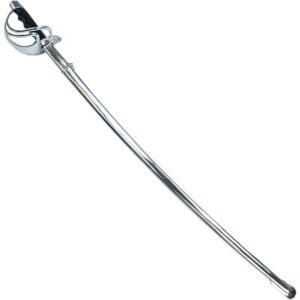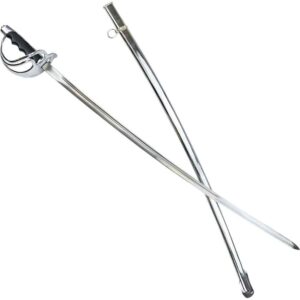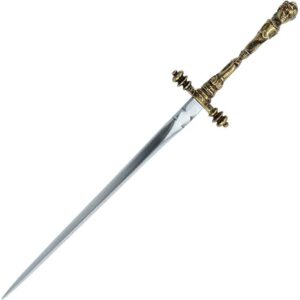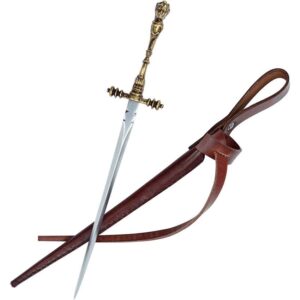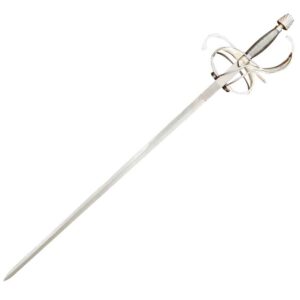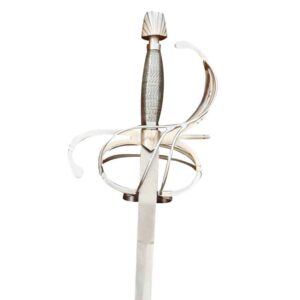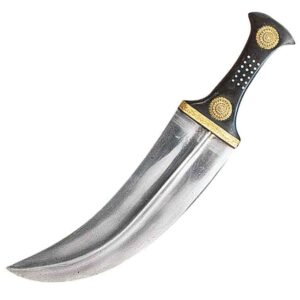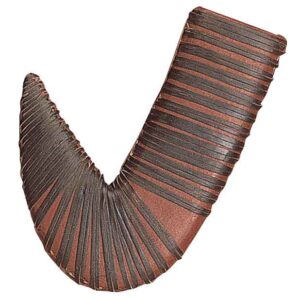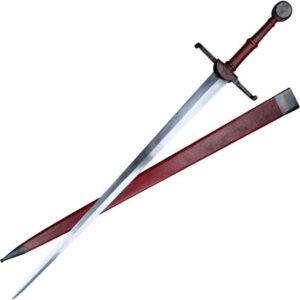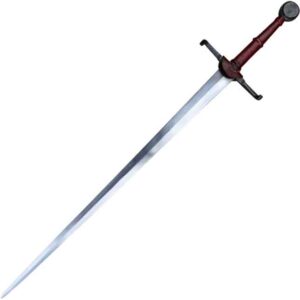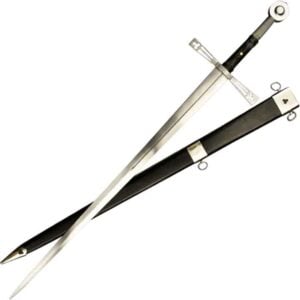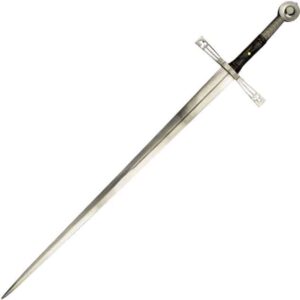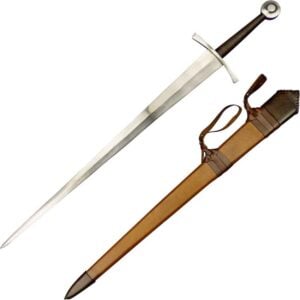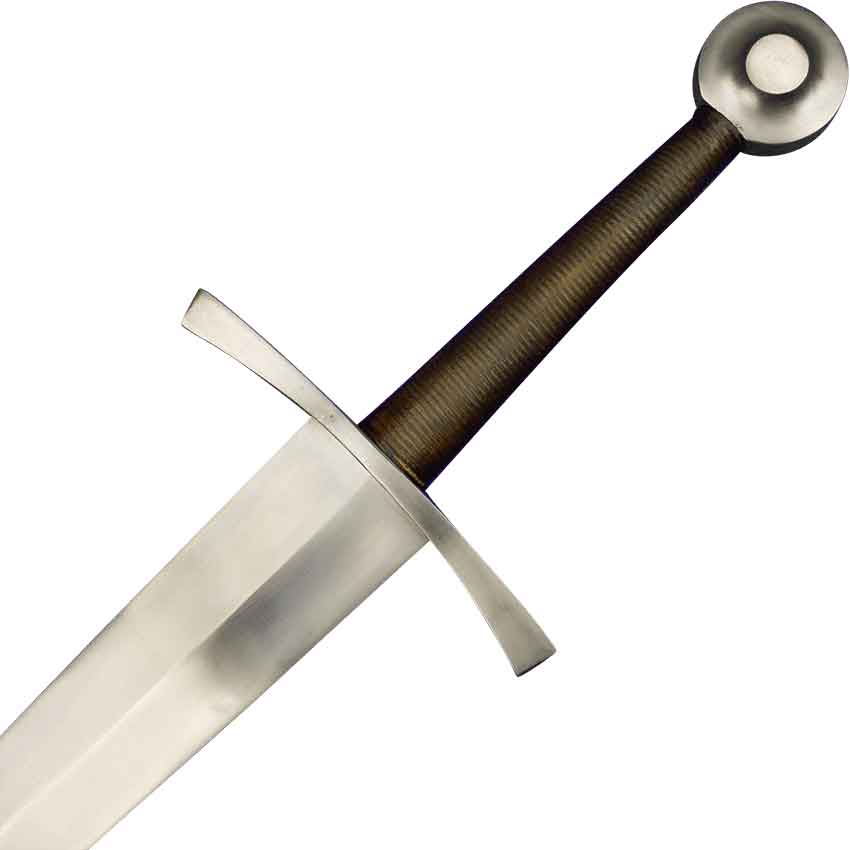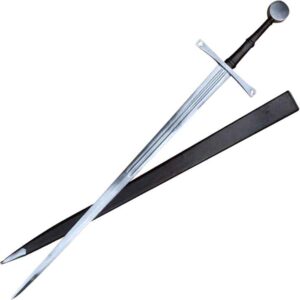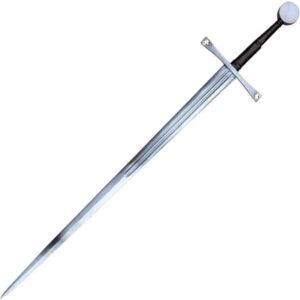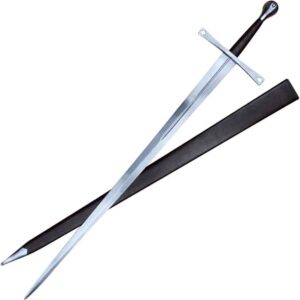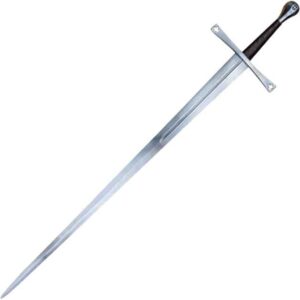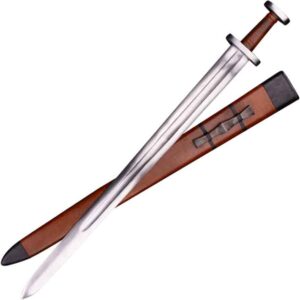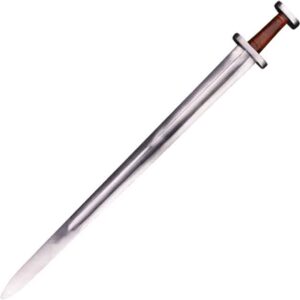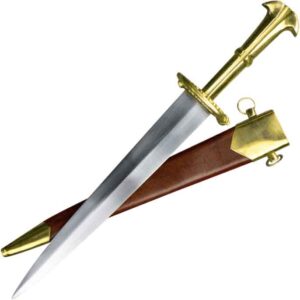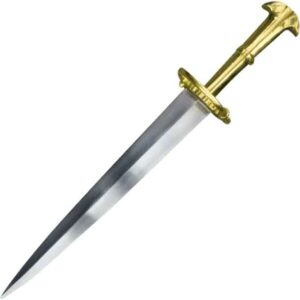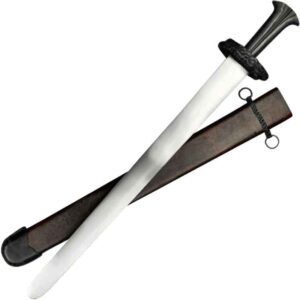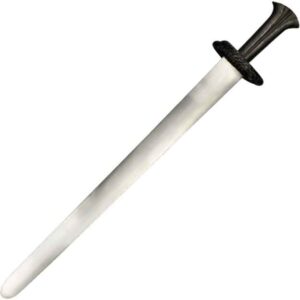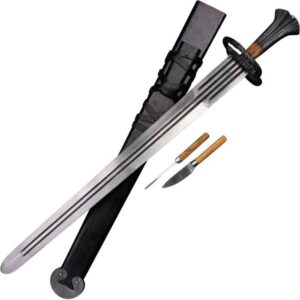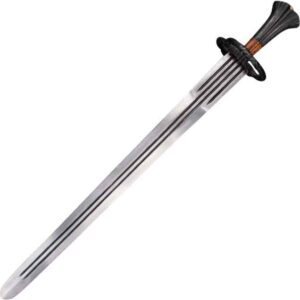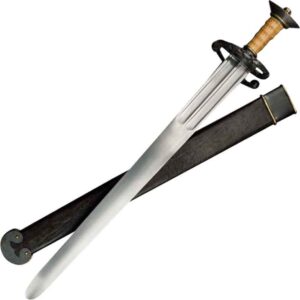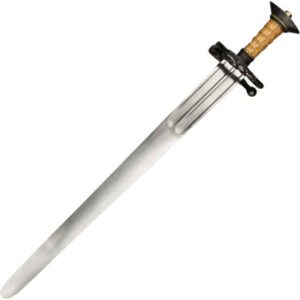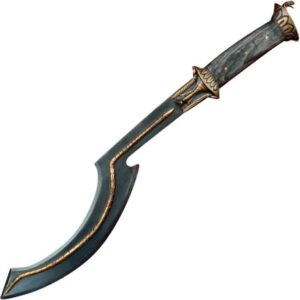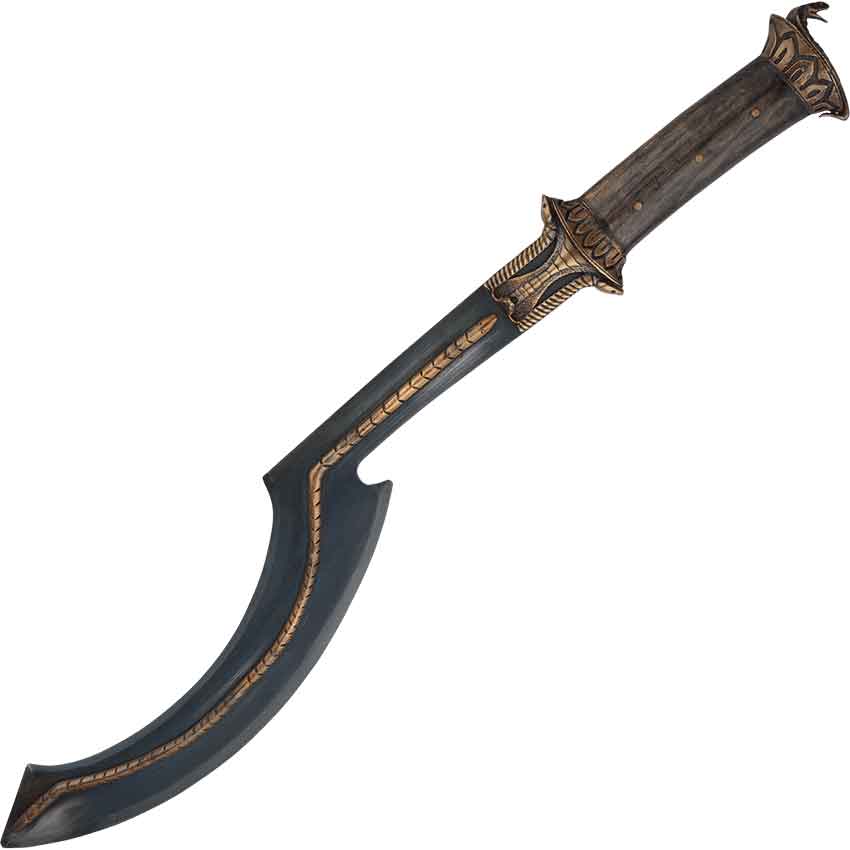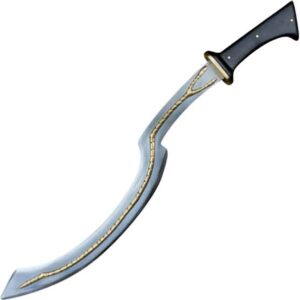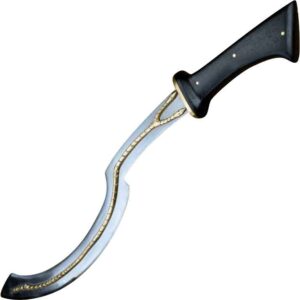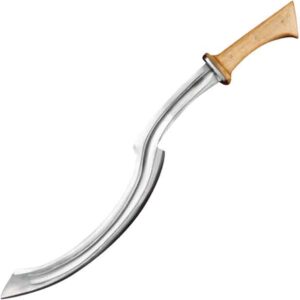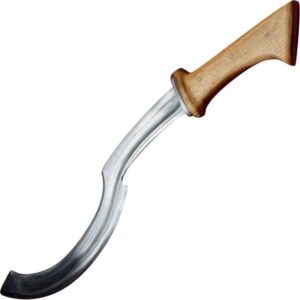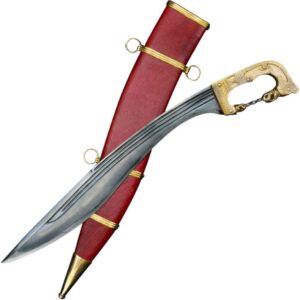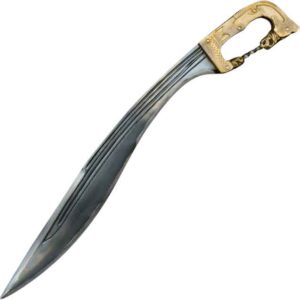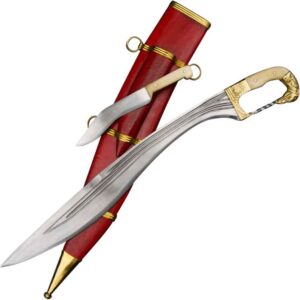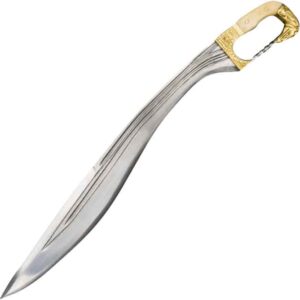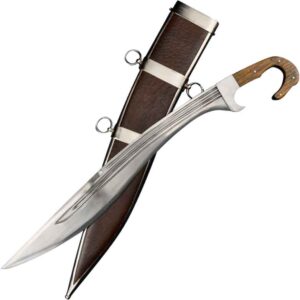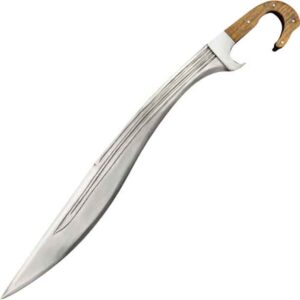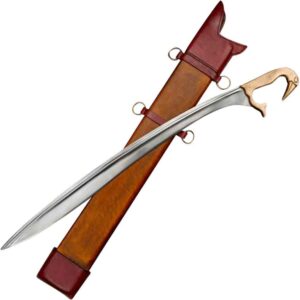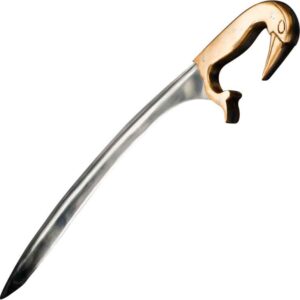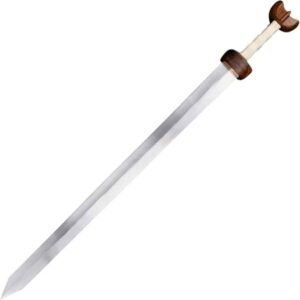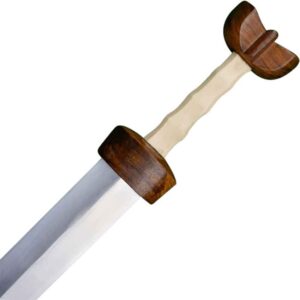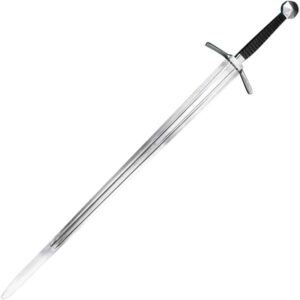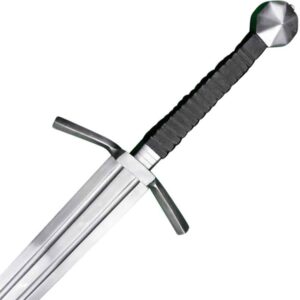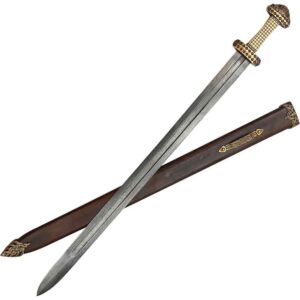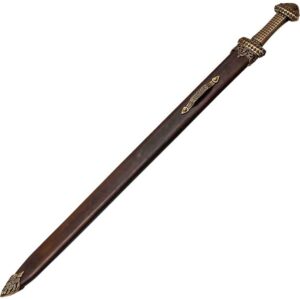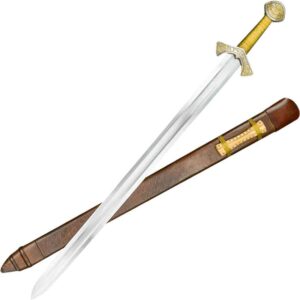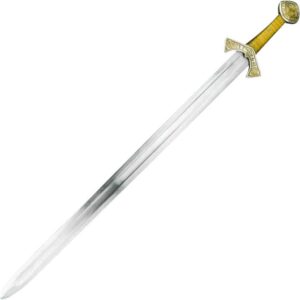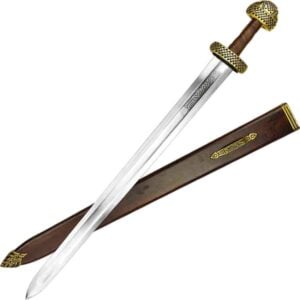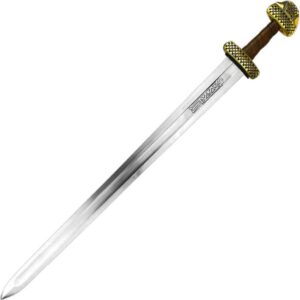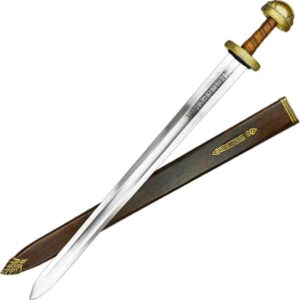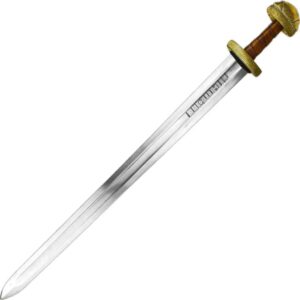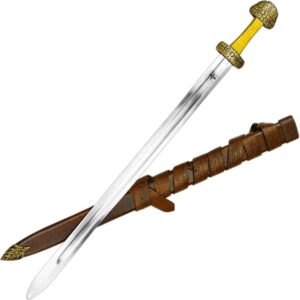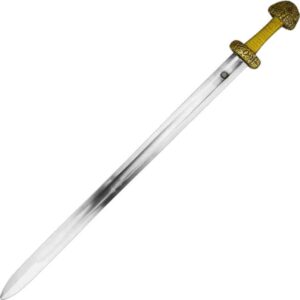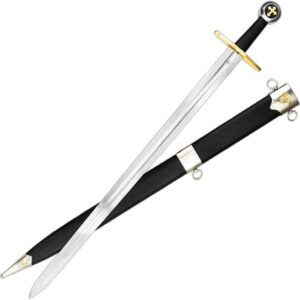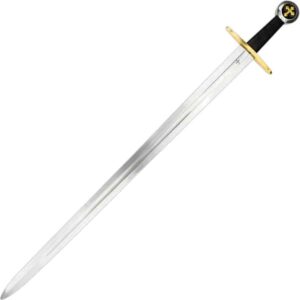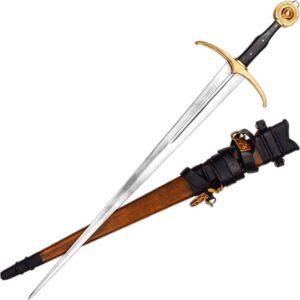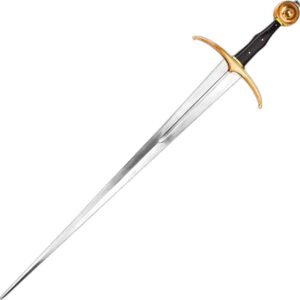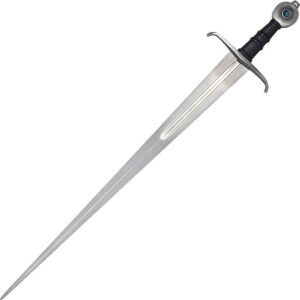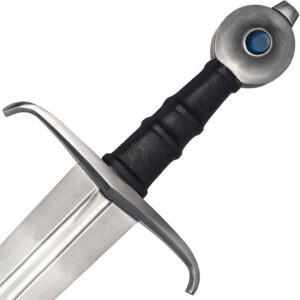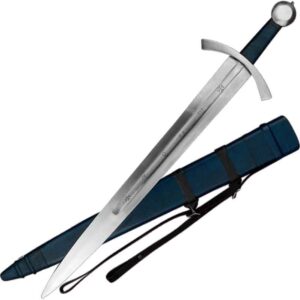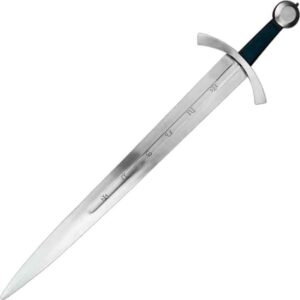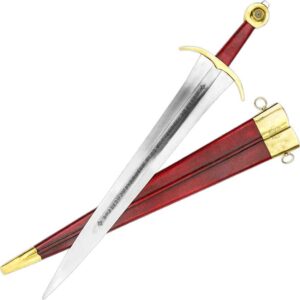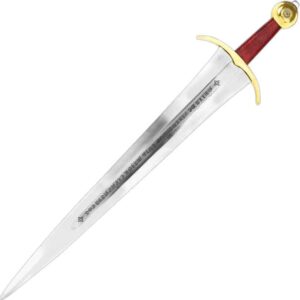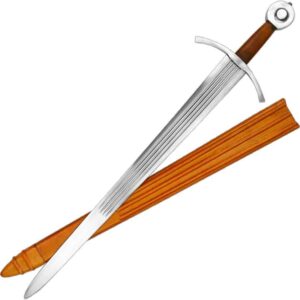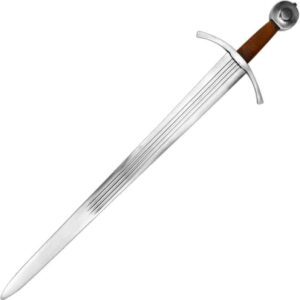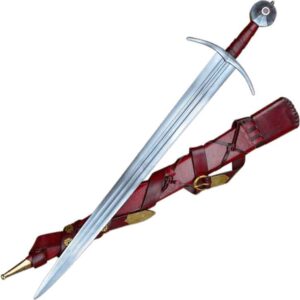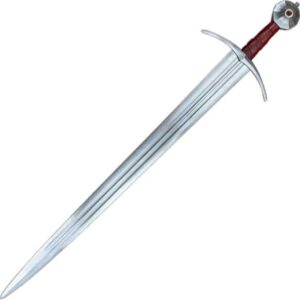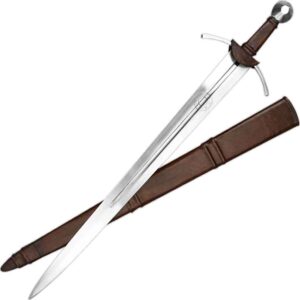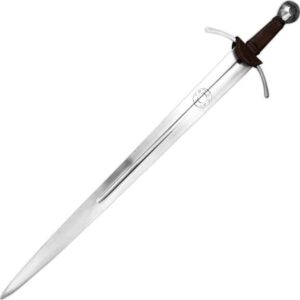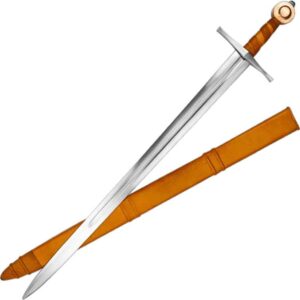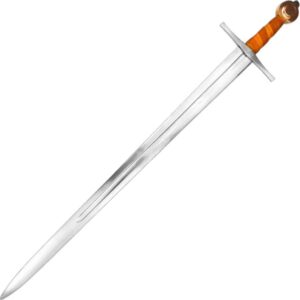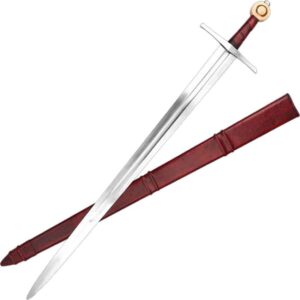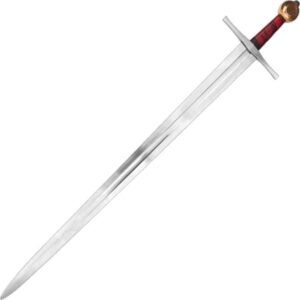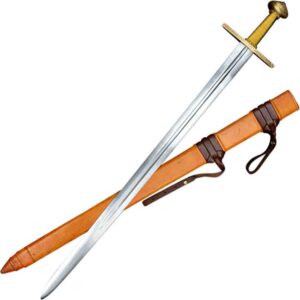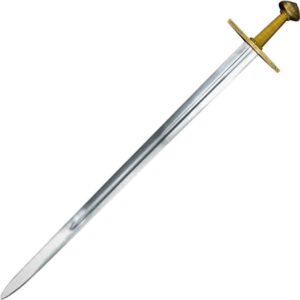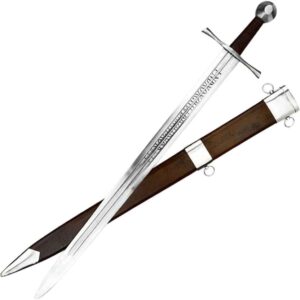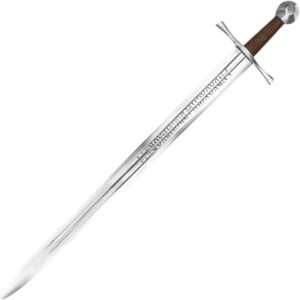Deepeeka
Showing 1–40 of 254 results
-
M1902 US Army Officers Saber
$149.89 Add to BagFrom the Revolutionary War to the Civil War, through the American Indian Wars to the modern day, the saber has been a companion to the American soldier. This M1902 US Army Officer Saber is a style that remains accepted to this day.
-
Princess Stiletto Dagger
$59.17 Add to BagThe Princess Stiletto Dagger is perfect for those wanting a dagger with some regal style. It has an ornate design that is ideal for nobility. You can add this dagger to any collection or display. It looks great with some costumes as well.
-
Fencers Swept Hilt Rapier
$182.65 Add to BagAs swords became lighter, carrying and fighting with one became popular among civilians. This Fencers Swept Hilt Rapier is one sword that a noble might have carried, as much for self-defense as a symbol of personal skill and prestige.
-
Arabic Jambia
$61.69 Add to BagWhile its name translates literally to dagger, the Arabic Jambia is often a reference to a more specific kind of dagger, one that has personal and ceremonial meaning. This replica recreates the shape of a common style of Arabic blade.
-
Cluny 15th Century Longsword
$233.03 Add to BagTake to the battlefield with cunning, skill, and the Cluny 15th Century Longsword in hand as you bravely face the enemy. This sword is worthy of many knights, mercenaries, and other fierce warriors. Take it to your next medieval reenactment or battle.
-
Gothic Longsword
$233.03 Add to BagWhen fighting as a knight in Gothic armour, make sure that you wield a weapon that matches your striking look, like the Gothic Longsword. It is perfect for any medieval knight or fantasy warrior to wield.
-
15th Century Hand and a Half Knight Sword
$211.61 Add to BagBe ready to attack, brave warrior. With the 15th Century Hand and a Half Knight Sword in hand, you know the field between victory and defeat. This warriors sword is perfect for any medieval knight or fantasy warrior to wield.
-
15th Century Battle of Nicopolis Longsword
$226.71 Add to BagTaking the 15th Century Battle of Nicopolis Longsword into battle, you await the onslaught of the enemy and the victory beyond. It is perfect for any medieval knight or fantasy warrior to wield.
-
Shrewsbury Hand and a Half Sword
$226.73 Add to BagStepping onto the field, your destiny awaits you. Lifting the Shrewsbury Hand and a Half Sword, you ready yourself for the first attack. It is perfect for any medieval knight or fantasy warrior to wield.
-
Norwegian Viking Sword
$173.81 Add to BagAt your next Viking reenactment, become the fierce fighting force of your dreams and wield the Norwegian Viking Sword against your foes. This sword is perfect for anyone wishing to follow the lead of Ragnar Lothbrok, Thor, or any other Viking warrior.
-
Landsknecht Brass Hilt Katzbalger Dagger
$117.11 Add to BagWhen you want a small sidearm for your late-medieval reenactment, why not carry a dagger like the Landsknecht Brass Hilt Katzbalger Dagger? This German dagger makes a great sidearm for any Landsknecht warrior or medieval mercenary.
-
Landsknecht Katzbalger Mercenary Sword
$188.93 Add to BagFeel fierce and historically true when you fight as a late medieval mercenary by wielding the Landsknecht Katzbalger Mercenary Sword. This sword is ideal for medieval reenactments, historical battles, and more.
-
Landsknecht Katzbalger with Byknives
$333.83 Add to BagAs a member of a legendary mercenary group, you battle far and wide. Thus, you carry with you the Landsknecht Katzbalger with Byknives. This sword is ideal for medieval reenactments, historical battles, and more.
-
Southern German Landsknecht Katzbalger
$314.93 Add to BagNo matter where your travels or missions take you, you are ready for battling any enemy with the Southern German Landsknecht Katzbalger. This sword is ideal for medieval reenactments, historical battles, and more.
-
Khopesh of the Pharaoh
$197.75 Add to BagLike a snake in the grass, you are ready to cunningly take down your opponents with the Khopesh of the Pharaoh in your hand. It is ideal for any Egyptian reenactment. You can also easily add this khopesh to any collection of ancient weaponry.
-
Full Tang Egyptian Black Khopesh
$223.11 Add to BagBecome a mighty pharaoh or a fierce guard defending one when you wield the Full Tang Egyptian Black Khopesh against your foes. It is ideal for any Egyptian reenactment. You can also easily add this khopesh to any collection of ancient weaponry.
-
Full Tang Egyptian Khopesh
$151.15 Add to BagWhy not fight your enemies in the style of the ancient world and wield the Full Tang Egyptian Khopesh against them on the battlefield? It is ideal for any Egyptian reenactment. You can also easily add this khopesh to any collection of ancient weaponry.
-
Madrid Iberian Falcata
$209.09 Add to BagIf you wish to take on your foes in the style of Ancient Iberia, make sure to wield the Madrid Iberian Falcata against them. It is ideal for wielding at a reenactment of the Second Punic War or another Roman reenactment.
-
Horse Head Iberian Falcata
$207.83 Add to BagTake on the greatest warriors of Rome or any other army looking to take your land. Wield the Horse Head Iberian Falcata against them. It is ideal for battling at a reenactment of the Second Punic War or another Roman reenactment.
-
Iberian Falcata with Wood Grip
$151.15 Add to BagFight against Octavian and the Romans with might, skill, and the Iberian Falcata with Wood Grip in hand, ready for battle. It is ideal for wielding at a reenactment of the Second Punic War or another Roman reenactment.
-
Korfu Greek Kopis
$173.81 Add to BagFight your foes on the battlefield alongside Leonidas, Odysseus, or Alexander the Great with the Korfu Greek Kopis in hand. This Hoplite sword is ideal for Greek reenactments and battles. Not only functional, it looks great in the hand of any warrior from Ancient Greece.
-
Roman Cavalry Sword
$195.25 Add to BagYou sit upon your steed ready to fight for Rome and the empire. With the Roman Cavalry Sword in hand, you await the signal to attack. No matter if you fight under the guidance of Julius Caesar or Scipio Africanus, you feel powerful and mighty.
-
Medieval Gothic Sword
$207.47 Add to BagSwords were the weapon of choice during the medieval period, and Gothic influence often made its way into their style. The Medieval Gothic sword is an example of this influence, marrying these designs into a great weapon.
-
Damascus Ornate Bronze Hilt Viking Sword
$579.93 Add to BagViking warriors such as yourself know the importance of having a great sword like the Damascus Ornate Bronze Hilt Viking Sword in battle. Take this sword with you to your next historical reenactment or add it to a Viking sword collection.
-
Langeid Viking Sword
$338.69 Add to BagWhen you want to take on your enemies in true Viking style, be sure to wield the Langeid Viking Sword against them in battle.
-
10th Century Viking Sword
$317.52 Add to BagThe 10th Century Viking Sword is a great companion weapon to any might Viking warrior or leader. Wield it in battle against your foes. Take it to your next reenactment or battle. It also looks wonderful added to a weapon collection.
-
Ulfberht Rus Viking Sword
$317.52 Add to BagTake on your enemies in the early Middle Ages as a mighty Viking when you wield the Ulfberht Rus Viking Sword on the battlefield. Take this sword to your next reenactment or battle. It also looks wonderful added to a weapon collection.
-
Rus Viking Sword
$317.52 Add to BagFight your foes as a might Viking! With the Rus Viking Sword in hand, you can fiercely battle against your enemies with style. Take this sword to your next reenactment or battle. It also looks wonderful added to a weapon collection.
-
Militia Templi Sword
$249.43 Add to BagThe Militia Templi Sword makes a great companion sword for a Templar Knight or any mighty and skilled Crusader to take into battle. This knights sword is ideal for historical reenactments and weaponry collections.
-
Aislinn Knight Sword
$299.83 Add to BagBecome a mighty warrior on the battlefield with the Aislinn Knight Sword. Ensure victory when you defeat your foes on the battlefield. This knights sword is ideal for historical reenactments and weaponry collections.
-
Castillon Arming Sword
$249.43 Add to BagTake to battle with all the ferocity of a true warrior and claim victory against your foes while wielding the Castillon Arming Sword. This knights sword is ideal for historical reenactments and weaponry collections.
-
Lake Neuenburg Arming Sword
$210.37 Add to BagIn the fierce heat of battle, you should have a truly mighty weapon in hand. Wield the Lake Neuenburg Arming Sword against your foes. This knights sword is ideal for historical reenactments and weaponry collections.
-
Phillipe IV Sword
$248.17 Add to BagYou can look and fight like a king by wielding the Phillipe IV Sword. It takes its name from Phillipe the Fair from medieval France. This knights sword is ideal for historical reenactments and weaponry collections.
-
Moonbrand Arming Sword
$239.35 Add to BagYou can take the Moonbrand Arming Sword to the battlefield and wield it against your foes to claim your victory in combat. This knights sword is ideal for historical reenactments and weaponry collections.
-
13th Century Knights Sword
$233.05 Add to BagAs you survey the horizon, you rest your hand on the hilt of the 13th Century Knights Sword in anticipation of an enemy attack. This knights sword is ideal for historical reenactments and weaponry collections.
-
Toto Arming Sword
$222.97 Add to BagWarriors, such as yourself, need to wield a sword like the Toto Arming Sword when going to defend their kingdom in battle. This knights sword is ideal for historical reenactments and weaponry collections.
-
St Annen Sword
$253.21 Add to BagFight your foes with great skill and cunning on the battlefield. Claim victory against your enemies with the St Annen Sword in hand. This knights sword is ideal for historical reenactments and weaponry collections.
-
Lubeck Arming Sword
$258.25 Add to BagWhen you defend your kingdom or a castle, you need the right weapon in hand. Wield the Lubeck Arming Sword against your foes. This knights sword is ideal for historical reenactments and weaponry collections.
-
St Maurice Vienna Sword
$238.09 Add to BagYou have prepared for the oncoming army. With the St Maurice Vienna Sword, you take on your foes with great skill and courage. This knights sword is ideal for historical reenactments and weaponry collections.
-
River Witham Arming Sword
$229.27 Add to BagTake to the battlefield with historical flair and true warrior style. Wield the River Witham Arming Sword against your foes. This knights sword is ideal for historical reenactments and weaponry collections.
Add authenticity to your historical re-enactment or personal collection with the addition of fantastic Deepeeka weapons from Buying a Sword. The Deepeeka brand produces excellent decorative swords and weapons replicas from a variety of historical periods and cultures ranging between medieval, Greco-Roman, Viking, Egyptian, Celtic, and beyond. The types of ornamental weapons include pole arms, axes, daggers, maces, war hammers, and others. The collectible swords make great costume swords, training weapons, or display pieces. The decorative weapons are crafted with authenticity in mind, making these Deepeeka products a great choice for re-enactors and collectors. Whether you are looking for a bec de corbin, a flanged mace, a Turkish scimitar, a medieval arming sword, a pugio dagger, or a Renaissance rapier, you can find something of interest here!

